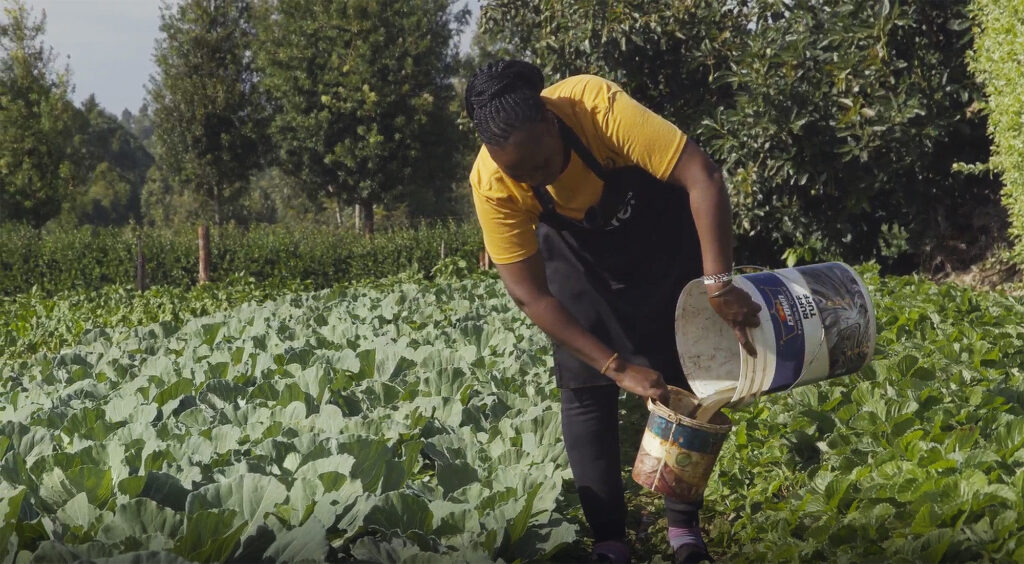
What is Biogas?
Biogas is, to put it simply: a biological (natural) generated gas.
Biogas production comes from the breakdown of organic materials – food waste, manure, agriculture waste and even more – in an anaerobic digestive process (that means without the use of oxygen).
Biogas is so important to the sustainable living community as it’s an important renewable energy source. It is made up mostly of methane, carbon dioxide, and some other small amounts of hydrogen moisture and other gases in trace amounts.
As the biogas production continues, gases are released, reacting with each other in a chain of processes to produce the end result: the biogas, as well as a separated liquid and solid run-off known as “digestate” (both of which can also be used for other sustainable living purposes, but more on that later).
Biogas production is incredibly versatile: it can be used to power your home, cook your food, and even power your car (after deploying another chemical process to further refine it). Biogas is a renewable energy resource too, as its production is a continuous cycle that can be repeated ad nauseum!

What’s the Process of Biogas Production?
Although it might sound a little complicated, the actual biogas production happens naturally: the first thing you need to produce biogas is a suitable vessel (this can be a reactor, such as a purpose-built biogas oven), or an industrial biogas production system.
Although you don’t need to be an active part in the process itself (since it happens naturally within your chosen reactor), the actual chemical process of biogas production happens like this:
- Add in the bio waste into the reactor (as mentioned above, this can be natural waste, food waste, agricultural waste or otherwise. The reactor you work with will depend on the type of waste you’re using, as will the amounts and biogas production time).
- The biowaste is crushed down into small chunks and then liquified to make the anaerobic digestion processes quicker and smoother. By adding liquid, it’s easier to process.
- The biowaste is heated to 37 degree celsius – this is optimum temperature for the microbes to begin the process of biogas production!
- The biogas production begins. The fermentation process starts with the microbes feeding on the organic matter in the reactor, breaking these down into proteins, lipids, carbohydrates and otherwise. The anaerobic digestion process converts them into methane and carbon dioxide.
- Depending on the type of biogas production, it could take anywhere from an hour to 3 weeks (for industrial-level biogas production) before the biogas is ready to use.
- Before it’s used, the biogas’ impurities and carbon dioxide is removed, the carbon dioxide can also be used for other purposes.
The biogas production outlined above doesn’t take into account another huge benefit of the process: the digestate. This is all of the byproducts – liquid, solid – run-off that is produced during the biogas fermentation process. It can include creating organic fertilizer for sustainable gardens, or for industrial purposes too.
Which Is the Main Source to Produce Biogas?
The best part about the biogas production process, is that virtually anything (so long as it’s organic) can be used to source biogas! Depending on whether you’re looking to use biogas for home or industrial use, the exact specifications of what you can use as your biogas source can vary, in amount, processing time and otherwise.
However, some popular biogas sources include –
- Food waste
- Organic human waste
- Animal waste
- Agricultural waste (as long as it’s been cleaned of any pool;lutants or chemicals)
- Landfill gas
Of course for home biogas production, you can use anything you have lying around. These include food scraps, animal waste, garden cuttings and otherwise. It’s a fantastic way to ensure nothing goes to the trash, while also using any ‘trash’ for renewable energy purposes!
The Pros and Cons of Biogas Production
Of course, even though it sounds like it’s heaven-sent for advocates of the cyclical energy cycle, it can’t all be plain-sailing for biogas production…or can it?
Here are just the advantages and disadvantages of using biogas for your renewable energy needs:
Biogas Advantages
- Biogas is clean, plentiful…and renewable. Not only can you use virtually any type of source (see above) to power your biogas production, but as long as you have some form of waste to do so, you can keep producing biogas!
- Biogas production reduces your reliance on silk, water and other energy sources, such as gas and electricity. This means you can live a more energy-independent lifestyle, while also reducing your energy costs and consumption!
- It’s an environmentally friendly way of protecting local wildlife and habitats. While other energy sources need to source ever-more destructive ways to continuously create energy, biogas production only needs a source of waste (such as the types outlined above) and a suitable reactor!
Disadvantages
- Biogas production is less effective in colder climates. That’s because the optimal temperature needed to produce biogas is 37 degrees celsius.
- Industrial-level biogas production can take a letter of weeks before the biogas produced is ready for use. Of course having an ongoing cycle of biogas production means you can always have some ready and waiting to use, and for home-production of biogas, you can begin the biogas production process and use it to power your activities in as little as an hour!
HomeBiogas: the At-Home Biogas Solution
Biogas production isn’t a complicated process. In fact, it’s so quick and easy, you can even do it yourself, in your own home!
The HomeBiogas solution is a quick, no fuss-way to live your sustainable lifestyle, all the while putting your food and other organic household wastes to good use!
Check out how HomeBiogas can help you live a renewable, clean-energy focused lifestyle.






